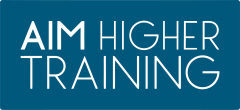We often set out with good intentions at the beginning of each year but all too quickly they can fall away, and our goals become distant memories. It is a sad fact that 80% of New Year’s resolutions fail by mid-February. There are many reasons for this, such as setting unrealistic goals in the first place, failing to make these goals SMART, and failing to integrate these new goals into our daily routines and schedules.
However, here are a few simple steps that might help to make goal setting more effective and help you to make 2022 your best year yet.
Setting Goals
The first rule is to be clear about the goals you wish to set and then create a plan about how you will measure and celebrate success. As you set goals it is useful to evaluate your previous goals and make a realistic appraisal of how effective you have been in terms of integrating your goals into your daily schedule and forming hew habits. Reviewing last year’s goals can also help you to analyse where you might have gone off track and help you to understand why this may have happened. As you reflect on the last year you should decide to leave the negative things that have impacted you behind and turn a new page and decide to not take them with you into the new year.
It is also helpful to assess yourself and your life and you can do this easily by engaging with some simple self-assessment tools. Aim Higher Training offers free online courses that can help guide you towards establishing your areas for development. Spotlight on Work-Life Balance guides you through a process of reviewing key areas of your life and work through the use of coaching wheels and Spotlight on Personal Growth digs deeper by reviewing your strengths and weaknesses and assessing your skillset.
You can also try to create a vision board by looking for images that represent your ideal life. Explore sites like Pinterest and Google Images and find photographs of lifestyle that appeal and inspire to you. Pull these together into a scrapbook or powerpoint slide and keep them close by so you can stay motivated to keep working towards your goals.
Setting Motivating Goals
Once you have established your key areas for self-improvement, you can start to set your goals. Goals should motivate you and link to key areas where you really want to make a change.
Goals should also link to your ‘Why.’ If you’re not sure what really drives you in life you could try checking out Simon Sinek’s Start with Why to galvanize your thinking.
He sets out to answer why certain individuals and companies are much more successful, effective, and innovative than others, even for companies that have access to the same resources, technology, and personnel. It shows how innovative and successful companies are different because they establish a clear reason ‘why,’ and how they communicate this to their customers. Applying these ideas to your own life helps you to understand what motivates you to get out of bed every morning by establishing your own personal ‘why.’
Once you have established your ‘why,’ you can start to easily identify the areas of your life that you may wish to develop so you can work towards achieving all your goals. For example, if you want to improve your health so you are more able to physically and mentally achieve your ‘why.’ Your goals may be to lose weight, eat healthier, and exercise more, you can start to think about what success looks like and be realistic about what and how you can achieve your goals.
Write your Goals Down and Make them SMART
Writing down your goals and phrasing them with ‘I will,’ helps to take ownership of your goals. Making them SMART helps to guide you towards what is possible and realistic based on your current situation.
A goal or objective is a statement that describes what an individual, team, or organisation is hoping to achieve.
For an objective to be SMART it needs to be specific, measurable, achievable, relevant and time-bound.
Specific – When an objective is specific, it clearly describes the outcome you wish to achieve. Goals should be clear, detailed, focused and unambiguous.
Example: Set an objective to lose weight.
Measurable – The objective becomes measurable once a metric is selected to use as a performance indicator. Measurement is extremely important when setting objectives by using percentages, rates, or numbers. This helps you to see when something has been completed or achieved.
Example: To lose 10 lbs in weight
Achievable – Objectives need to be achievable because this affects the level of motivation applied and makes success more likely. When faced with the impossible you may feel demotivated and just not bother to work towards trying to achieve the objective.
Key considerations will be the support available, budget, time, and equipment available to make your goal most likely to succeed.
Example: To lose 10 lbs in weight by eating a healthier diet, cutting out excess sugar, exercising more and adopting new habits to support these aims.
Relevant – Relevant objectives must move you towards achieving your stated goals and should relate to your ‘why’, vision, values, and objectives.
Example: To lose 10 lbs in weight by identifying a diet that you can follow easily and can afford, and find time in your day to increase exercise and choose a fitness regime that will interest and motivate you.
Time-bound – It is good practice to set interim deadlines to achieve your overall goals and to break them down into interim steps or milestones that you can monitor at regular intervals.
Example: To lose 10 lbs in weight within a realistic timeframe. Aiming to lose 10 lbs in a week is unrealistic and self-defeating.
Slow and steady weight loss has proven to help people maintain a much healthier weight in the future and helps to build healthy long-term habits. Setting a goal to lose 10 lbs in 10 weeks would be far more realistic and achievable.
Create an Action Plan
Once you have established your goals and made them SMART, it is time to create your action plan.
If you’re unsure where to start when making your plan, try working through our free online short course Spotlight on Making a Plan.
When building your action plan you should consider your current life and work responsibilities and be realistic given these constraints. By incorporating your goals into your daily schedule you can start to turn your goals into good new habits and embed them into your lifestyle.
For example, when aiming to achieve a goal to lose 10 lbs you will need to think about the diet you want to follow and the time you are going to dedicate to exercise. This will mean getting organised by setting reminders in your calendar to make time available for regular exercise and stick to it. You should also set time aside to menu plan, review your current food stocks, plan your shopping list, and allow time to prepare and cook the food for your new diet.
As you create your action plan build in milestones. So for example, if your goal is to lose 10 lbs plan, it is important to be clear about how you will review your progress and what your first milestone will be. Once you have set these you can also plan how you will celebrate your success, such as allowing yourself a little treat or buying new clothes.
As you work through your action plan you should also build in time to review your progress. If your goal is to lose weight you should plan your reviews on a regular basis. This could be a weekly weigh-in which you should record. Over time you can see how well you are working towards achieving your new goals.
Achieving personal goals is often a difficult challenge as often they mean making significant changes to your current lifestyle. You need to be able to be in the right place with your mental health, as otherwise, you risk serious overwhelm and could fall at the first hurdle. Be realistic and try not to be over-ambitious. Bite-size goals are much easier to meet over time, such as breaking up a weight loss plan into segments of 5 lbs over a set period. It is easier for them to celebrate your success by marking your achievement and reflecting on the positive steps you have taken to meet your goals.
At Aim Higher Training we aim to support individuals with setting and meeting personal and professional goals. If you feel that you need additional support with achieving your 2022 goals, please get in touch and we will be happy to help you make 2022 your best year yet.

